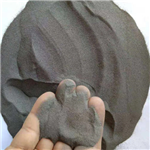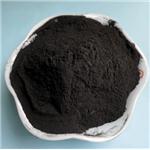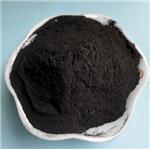What is Iron?
Aug 13,2021
Iron is a chemical element with symbol Fe (from Latin: ferrum) and atomic number 26. It is a metal that belongs to the first transition series and group 8 of the periodic table. It is, by mass, the most common element on Earth, right in front of oxygen (32.1% and 30.1%, respectively), forming much of Earth's outer and inner core. It is the fourth most common element in the Earth's crust.

Existence
In its metallic state, iron is rare in the Earth's crust, limited mainly to deposition by meteorites. Iron ores, by contrast, are among the most abundant in the Earth's crust, although extracting usable metal from them requires kilns or furnaces capable of reaching 1,500 °C (2,730 °F) or higher, about 500 °C (900 °F) higher than that required to smelt copper. Humans started to master that process in Eurasia by about 2000 BCE,and the use of iron tools and weapons began to displace copper alloys, in some regions, only around 1200 BCE. That event is considered the transition from the Bronze Age to the Iron Age. In the modern world, iron alloys, such as steel, stainless steel, cast iron and special steels are by far the most common industrial metals, because of their mechanical properties and low cost.
Properties
Pristine and smooth pure iron surfaces are mirror-like silvery-gray. However, iron reacts readily with oxygen and water to give brown to black hydrated iron oxides, commonly known as rust. Unlike the oxides of some other metals, that form passivating layers, rust occupies more volume than the metal and thus flakes off, exposing fresh surfaces for corrosion. Although iron readily reacts, high purity iron, called electrolytic iron, has better corrosion resistance.
Efficacy and effect
The body of an adult human contains about 4 grams (0.005% body weight) of iron, mostly in hemoglobin and myoglobin. These two proteins play essential roles in vertebrate metabolism, respectively oxygen transport by blood and oxygen storage in muscles. To maintain the necessary levels, human iron metabolism requires a minimum of iron in the diet. Iron is also the metal at the active site of many important redox enzymes dealing with cellular respiration and oxidation and reduction in plants and animals.
Chemically, the most common oxidation states of iron are iron(II) and iron(III). Iron shares many properties of other transition metals, including the other group 8 elements, ruthenium and osmium. Iron forms compounds in a wide range of oxidation states, −2 to +7. Iron also forms many coordination compounds; some of them, such as ferrocene, ferrioxalate, and Prussian blue, have substantial industrial, medical, or research applications.
- Related articles
- Related Qustion
- What is Iron flame test Feb 2, 2024
The positive result of a flame test for iron (Fe) produces a golden color. This is due to the excitation of electrons in the sample by the flame's heat. As these electrons lose their energy, they emit photons of golden light.
- Iron - Drug Discovery and Legand Oct 16, 2020
Iron appears to be the first mineral known to have been administered by mouth for therapeutic purposes.
Tetrahydropalmatine can be prepared from the total bases of tetrahydroxy berberine.....
Aug 12,2021APIFluoroform is a widely used ultra-low temperature refrigerant. Trifluoromethane(Fluoroform) can also be used as a gas fire extinguishing agent. It is an ideal substitute for Halon 1301.....
Aug 13,2021Organic ChemistryIron
7439-89-6You may like
- The structure of Vanadium carbide
May 11, 2024
- The research on corundum-type Ti2O3
May 10, 2024
- Tungsten nitrides and W-N structures
May 10, 2024
- Iron
-

- $1.00 / 1kg
- 2024-05-17
- CAS:7439-89-6
- Min. Order: 1kg
- Purity: 99%
- Supply Ability: 300tons
- Iron
-

- $1300.00 / 10tons
- 2024-05-17
- CAS:7439-89-6
- Min. Order: 10tons
- Purity: 99%
- Supply Ability: 1000tons
- Iron
-

- $1300.00 / 10tons
- 2024-05-17
- CAS:7439-89-6
- Min. Order: 10tons
- Purity: 99%
- Supply Ability: 1000tons




